Netflix Lost its Subscribers, But Why Are Viewers Unsubscribing And Switching Off Netflix

Netflix loses a million paid subscribers – Why some viewers are unsubscribing and switching off
Here is why Netflix lost around 10 lac subscriber
According to Netflix, there are 220.67 million paid users globally and 73.28 million in the US and Canada. One million more subscribers are expected in the third quarter.
In Los Gatos, California, the headquarters of Netflix, all is not good. The once-dominant streaming company is now working very hard to gain control of the market.
Even the harshest Netflix critics would not have imagined two consecutive quarters of declining membership numbers.
It still holds power, but for how much longer?
Netflix has just about 221 million total subscribers.
Netflix announced a loss of 0.97 million subscribers in its Q2 financial report, bringing the total number of its subscribers to 220.67 million.
With almost a million cancellations between the ends of March and June, the US and Canada led the cancellation chart. However, the corporation added roughly 1.1 million users in the Asia Pacific area.
Revenue for the corporation increased this quarter from $7.3 billion in 2021 to $7.97 billion.
Averting the worst-case scenario predicted by the company, Netflix Inc. revealed on Tuesday that it lost 970,000 subscribers between April and June. However, the company issued a forecast for the current quarter that was below Wall Street expectations.
It shows that an ad-supported tier will be added the following year and seen as a strong currency had an effect on the revenue booked from international clients.
Netflix shocked Wall Street by announcing in April that it expected to lose 2 million subscribers in the ensuing quarter, raising questions about its chances for long-term growth.
Netflix predicted that from July through September, it will add 1 million new customers, despite the second quarter’s subscriber cancellations not being expected. According to the experts Refinitiv surveyed, 1.84 million people were on the radar of Wall Street analysts.
Netflix’s prospects have changed after years of strong expansion as a result of rivals like Apple Inc., Warner Bros. Discovery, and Walt Disney Co. spending substantially on their own streaming services.
The company said in a letter to shareholders that it had conducted a more thorough investigation into the slowdown and had discovered a variety of contributing factors, including password sharing, competition, and a bad economy.
The most widely used streaming service is still Netflix, which has about 221 million paid subscribers globally.
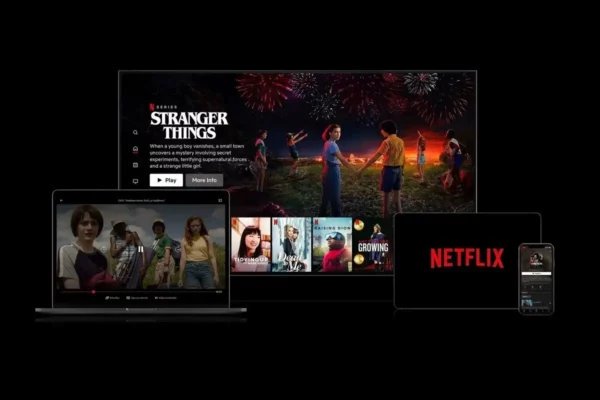
The company stated that limiting password sharing and offering the less expensive tier with advertising were two strategies it was using to lower client attrition. Last week, Netflix announced Microsoft Corp. as the ad-supported service’s technical and sales partner.
Additionally, the corporation is attempting to capitalize on the success of the television show “Stranger Things” and turning some of its biggest hits into franchises.
Earnings per share for the months of April through June came in at $3.20.
Netflix said that despite income increasing by 9%, the strong dollar hurt them. Without the effects of foreign exchange, revenue would have risen by 13%, according to the corporation.
Netflix, a well-known video streaming service, reported a loss of roughly one million paid customers in the second quarter of this year.
The corporation reported losing 9,70,000 customers in the second quarter, which is more than the 2,00,000 members that were lost in the first.
According to a statement from the corporation, “The second quarter was better than expected on membership growth, and foreign exchange was worse than projected (stronger US dollar), resulting in 9% revenue increase (13.0% constant currency)”.
“Our challenge and opportunity,” the statement continued, “is to monetize our sizable audience better while continuing to develop our product, content, and marketing as we have done for the previous 25 years.
According to Netflix, there are 220.67 million paid users globally and 73.28 million in the US and Canada. One million more subscribers are expected in the third quarter.
Netflix claims that its quarterly revenue climbed by 9%, from $7.3 billion in 2021 to $7.97 billion this quarter.
The platform announced in April that it had lost 2 lakh paying subscribers during the first quarter of 2022, marking the first subscriber loss in more than a decade.
People went to blockbuster successes like Squid Game and The Crown because they had few other options for entertainment when the pandemic hit in 2020, strengthening the country’s status as a global hegemony.
However, Netflix has found it challenging to keep the loyalty of its present customers and attract new ones when old habits from before the pandemic reemerge, mainly for consumers to make budget adjustments as a result of the rising cost of living.
The company and services like Apple TV, HBO Max, Amazon Prime, and Disney+ are in fierce competition with one another. Blockbuster and other video rental companies went out of business when Netflix first started. But the disruptor is becoming the disrupted.
Additionally, Netflix’s move to increase the cost of its service has turned off some subscribers.
Additionally, Netflix predicted a 20 lakh global paying subscriber loss for the second quarter of 2022. It only lost half of that, though.
“Weak currency hindered revenue growth”
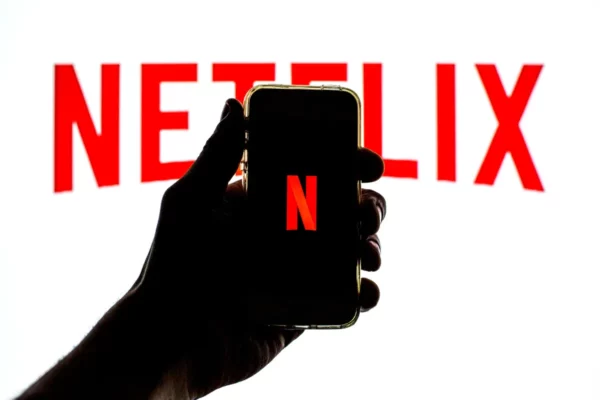
It’s usual for Netflix to report double-digit revenue increases. The second quarter was better than expected in membership growth, and foreign exchange was worse than expected (stronger US dollar), resulting in a 9 percent revenue increase (13 percent constant currency), according to the earnings release.
Not all of the current content will be available on the ad-supported tier.
In order to stem the decline in subscribers, Netflix is getting ready to introduce a new ad-supported tier in the first half of 2023.
The ad-supported tier will undoubtedly be less expensive than the current subscription options. There is a catch, though.
To prevent password sharing, Netflix is testing an additional “home” function.
One of the main causes of subscription renewal has always been highlighted by Netflix is password sharing. The company is looking into a new way to track the same across Latin America.
If customers use their Netflix account on a TV or TV-connected device outside of their primary residence for more than two weeks, the new tactic would encourage consumers to pay for a second “home.”
Increasing Competitors
Additionally, there was a time when Netflix had no competition for the title of “king of streaming.” With over 220 million subscribers, the corporation continues to remain far ahead of its closest rival.
Disney+, its primary competition, added eight million additional customers in Q2. During the same time period, Paramount Plus and HBO/HBO Max respectively added 40 million and 13 million users.
In the third quarter, Netflix expected to add one million new subscribers.
However, Netflix is upbeat about the following quarter in its earnings release. It predicted a million new consumers will be added. In addition, the business expects its sales to rise by 12% annually (YoY).
Why some viewers are opting out and unsubscribing from Netflix?
According to Ferran G. Vilaró, CEO of streaming video analytics company NPAW, the loss of users “seems to be mainly owing to increased competition from other streaming services, unfavorable global economic conditions, and the fact that the company already has a very high level of users.” The 220.6 million global subscribers to Netflix exceed the 74 million HBO Max users and the 87.6 million subscribers to Disney+, both of which are accessible in fewer countries.
There might eventually be a limit to the number of people who sign up for streaming services.
According to Nunan, while the scale of such ambition is astonishing, it turns out that it is unsustainable. The loosening of epidemic boundaries is one of the reasons some individuals may quit up the “flix.” Do I really need all of this stuff, and more importantly, can I afford it? is what customers are asking themselves. while they carefully review their streaming invoices.
When you don’t know what you want to eat, ordering takeaway can be similar to subscribing to a streaming service: you pay the money and hope that what you get is to your taste.
Netflix lost over one million subscribers between April and July, albeit that was less than the two million it had expected. Fewer people are now willing to take a risk on the streaming menu as of late.
It has seen that our streaming preferences are converting as some people find the shows less enticing, their household finances are being stretched, Netflix’s Covid boom is over, and competitors are trying to whip up a better product.
James Leiper, a 26-year-old from Huddersfield, is one of the fewer Netflix subscribers. The homeowner explains, “Last year, I bought a house, so I thought I needed to take control of what I was spending, and all the monthly subscriptions built up.
“In the past, I paid subscriptions of a lot of money for four streaming services that I hardly ever used.

Netflix was the first to disappear for me because I was only watching a small number of the shows there.
Mr. Leiper claims that as a result of factors including rising gas and electricity prices, he is now more aware of his monthly spending.
I used to watch everything on Netflix five or six years ago, but now there isn’t as much and I’m not compelled by anything, he says.
According to research firm Kantar, fewer British homes are using streaming services than at the beginning of the year, with 700,000 fewer households having at least one subscription.
Although Netflix continues to be the most widely used streaming service in the world, Tuesday’s statistics revealed its greatest loss in member numbers ever, three months after its first-ever drop sent its share price tumbling.
Despite its great successes with Squid Game, Stranger Things, and Bridgerton, TV critic Hayley Campbell claims that the company’s latest strategy of churning out material has failed.
“I believe Netflix is losing subscribers because it keeps churning out many episodes without pausing to check whether they are worthwhile,” she claims.
Netflix’s “ratio of garbage to amazing is way off,” she claims, although she feels the service is making an effort with programs like Heartstopper.
Apple TV+, according to her, “looks to be truly taking risks and investing money in developing something like Shining Girls or Severance,” making it the most intriguing destination for TV shows at the time.
In the last three months, Amazon Prime in the UK attracted more new subscribers than its competitors, according to Kantar.
The most intriguing content now available on Amazon Prime, according to Campbell, isn’t produced by Amazon but rather by networks like HBO.
Another Netflix user, 26-year-old Devon resident Matthew Rose, said: “Netflix provides amazing shows like Stranger Things and Squid Game but there are a lot of low-quality programs.
I only watch the major names because everyone is talking about them, and the brand doesn’t feel premium anymore.
He stopped paying for competing streaming services like Spotify last year and solely uses Disney+, relying instead on free trials to attract new consumers.
Mr. Rose claims he gets the high content from YouTube since it is “shorter and it’s like a long-form TikTok” and includes “really interesting short films.” Also free is YouTube.
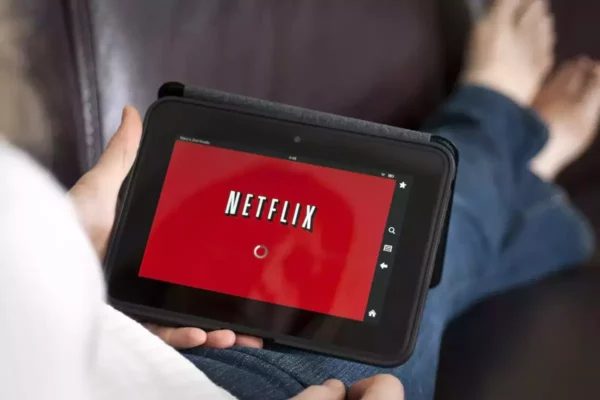
I literally just have Disney Plus because I love Star Wars, the man asserts.
He makes use of his sister’s Netflix subscription. She remarked, “If she deleted me, I wouldn’t subscribe myself.”
The crucial aspect of Netflix’s share price is that it structurally declining rather than just fluctuating. This is due to the magnitude and underlying tendencies; both investors and Netflix’s management are concerned about the variety of variables behind this decline.
A cost-of-living issue is brought on by rising inflation. Great television and movies are ultimately a (very) lovely to have rather than a necessity like food, water, or clothing.
Commercial competitors are fierce; they range from Disney to Paramount and from Amazon to Apple. Disney and other companies have come to the conclusion that they should monetize their content themselves rather than leave it up to Netflix. As wealthy competitors expand their libraries, Netflix thus loses content.
The stats were inflated by a rise in subscribers during a time when millions of wealthy people stayed home. The epidemic also put a stop to numerous performances, reducing the number of new shows available.
Netflix wants to cut down on password sharing because they think it’s preventing growth.
Even the UK Culture Secretary Nadine Dorries engages in it, recently acknowledging in front of the Parliament that her account was being used by “four other persons in different parts of the country.”
Streaming companies must also deal with the rising trend of subscription flipping, in which users switch from one service to another depending on which offers the content they want to watch at the time.
How did streaming providers overload us with content?
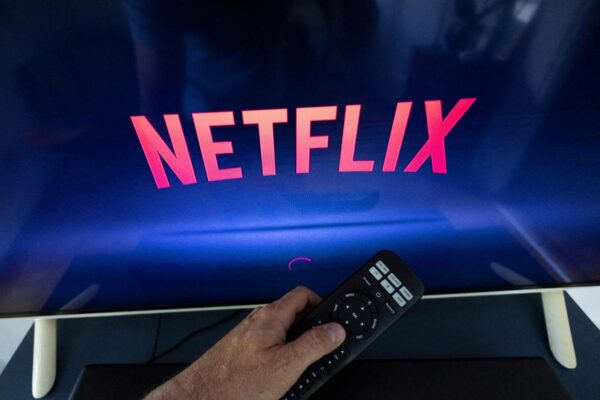
A less expensive plan that will include advertisements is one thing Netflix is hoping would persuade users to stick around, though the specifics and cost have not been made public.
Additionally, given that Netflix attracted 18 million new customers globally in 2021, bringing its total to almost 222 million, Tuesday’s two million declines in subscriber counts are still insignificant.
In 2021, Disney Plus had a subscriber base of over 118 million, while Amazon Prime Video had 175 million.
Despite these enormous numbers, traditional TV viewership consistently outperforms streaming in the UK. The TV rating agency Barb discovered that broadcast shows like the BBC’s Strictly Come Dancing and the ITV’s Coronation Street attracted more viewers at the height of Squid Game’s popularity last year.
One viewer, Lucy Stirman from Stockton-on-Tees, claims that it seems less lonely to watch TV when several people are doing the same.
Some shows are interesting as they have a lot of dramas and at the same time, you can watch them occasionally whenever you want to watch and not just regularly.
When a terrific movie or series gets added to Netflix or Amazon Prime, it’s more exciting when you learn about it from other people.
Though the 32-year-old has kept her Netflix subscription, she justifies it by saying that her daughter, who is almost one, watches it every day.
Another generation is growing up with a streaming; despite this, some younger viewers are canceling.
When will adverts appear on Netflix? How will they appear?
A more cheap, ad-supported subscription tier is on the way, according to Netflix, and it will debut in the early months of 2023. The service didn’t specifically state how or in which markets those adverts would first appear. As with most of our new initiatives, we plan to debut it, solicit feedback, and then swiftly iterate to improve the product.
So it’s feasible that our advertising agency will appear very different from how it does now in a few years.”
Similar packages are also offered by HBO Max, Hulu, and Peacock (which also has a free tier with ads), and shortly Disney+ will follow suit. It simply relies on how swiftly Netflix can launch it after last week’s decision to collaborate with Microsoft.
Although the most basic current ad-free monthly subscription costs $9.99, the typical tier is $16.49, the pricing has not yet been made public, and it is unknown how the advertisements will fit into the content.
Will they be forced into the middle of episodes that were never designed with a natural break for them, similar to those for network series? The elegance of TV advertisements, in Nunan’s words, “comes from thinking about how many to place, where to position, and at what speed,”
Additionally, Netflix’s advertisements may be very carefully tailored to its members.
According to Vilaró, “the market is going more and more toward highly targeted and tailored ads that can optimize the value for advertisers.” Netflix undoubtedly possesses the data skills required to deploy these kinds of advertisements, but that doesn’t imply it will.
Will Netflix offer fewer TV series and films?
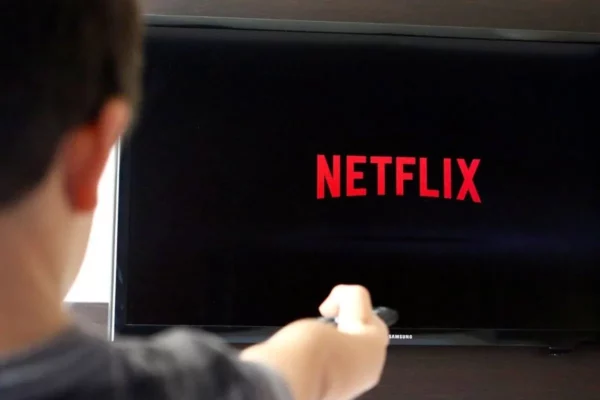
According to analysts, the streamer’s constant production of new videos will certainly slow down.
Netflix seems to have embraced the following streaming strategy: Let’s now completely manage everyone and cater to their wants. This tactic is pricey and extremely hazardous. This desire has an astounding range, yet it turns out that it cannot be sustained. They are learning how to be savvier, according to Nunan.
The Hollywood Reporter claims that Netflix has a new policy that calls for “Bigger, better, fewer” movies, implying that the streamer will prioritize tentpole, A-list entertainment like “Red Notice” above “vanity ventures” like Martin Scorsese’s “The Irishman.” One of these larger films, “The Gray Man,” starring Ryan Gosling and Chris Evans and currently in theaters and streaming on Netflix, is an example. It is said to have cost $200 million.
According to Myles McNutt, an associate professor of communications at Old Dominion University, “Netflix at this time is caught between an obvious push to become more populist and broad-ranging and the fact that what’s pulling people to other streamers is their strong connection to franchises.”
According to a studio official, production expenditures for upcoming Netflix programs are already being lowered, with the exception of the most expensive shows like “Stranger,” which for its most recent season cost more than $25 million per episode.
Will Netflix continue to carry shows like “Manifest”? Will the third season of my favorite program be the final one?
Roku has acquired a follow-up film to NBC’s canceled “Zoey’s Extraordinary Playlist” in 2021, and Amazon’s Freevee has picked up Season 2 of Showtime’s “American Rust,” starring Jeff Daniels.
It appears that the business of “rescuing” cancelled shows from elsewhere, which Netflix did for, among others, NBC’s “Manifest” and Fox’s “Lucifer,” has gone to the free streaming services. Name-brand series are assisting those streamers in their competition for a seat at the table.
“Manifest” was chosen by Netflix because, according to data, the program has enough devoted viewers to justify the renewal, claims Nunan. These renewals on new streaming services or networks are “always because the new “show parent” trusts the asset and has evidence to support that trust. It’s never an emotional “saving” decision; it’s always a business decision.”
Because its economic strategy is centered on attracting new customers with fresh programming, Netflix has developed a reputation for axing series after just two or three seasons.
“longer-running shows are more likely to attract a devoted, invested audience and strengthen bonds between the platform and its subscribers. But they could also be more expensive.”
The salary for performers and other creatives increases as a series goes on, according to Vilaró. Only if non-tentpole series like “Bridgerton” or “Stranger Things” keep gaining or keeping viewers will they be able to run for several seasons.
What else might Netflix change?
The economy is struggling, and Hollywood is not exempt. As the consequences spread, There may be significant changes made by Netflix. Streaming TV is starting to resemble basic cable more and more as bundles like Disney+, Hulu, and ESPN+ arise, advertising becomes more prevalent, and episodes are increasingly provided weekly rather than all at once.
The disruption caused by Netflix was only temporary, according to McNutt, who adds that its characteristics, such as binge releases and a lack of commercials, are gradually being changed by other streaming services. The “future of television will appear closer to the past of television than we would have thought,” notwithstanding what might have been true five years ago.
edited and proofread by nikita sharma




